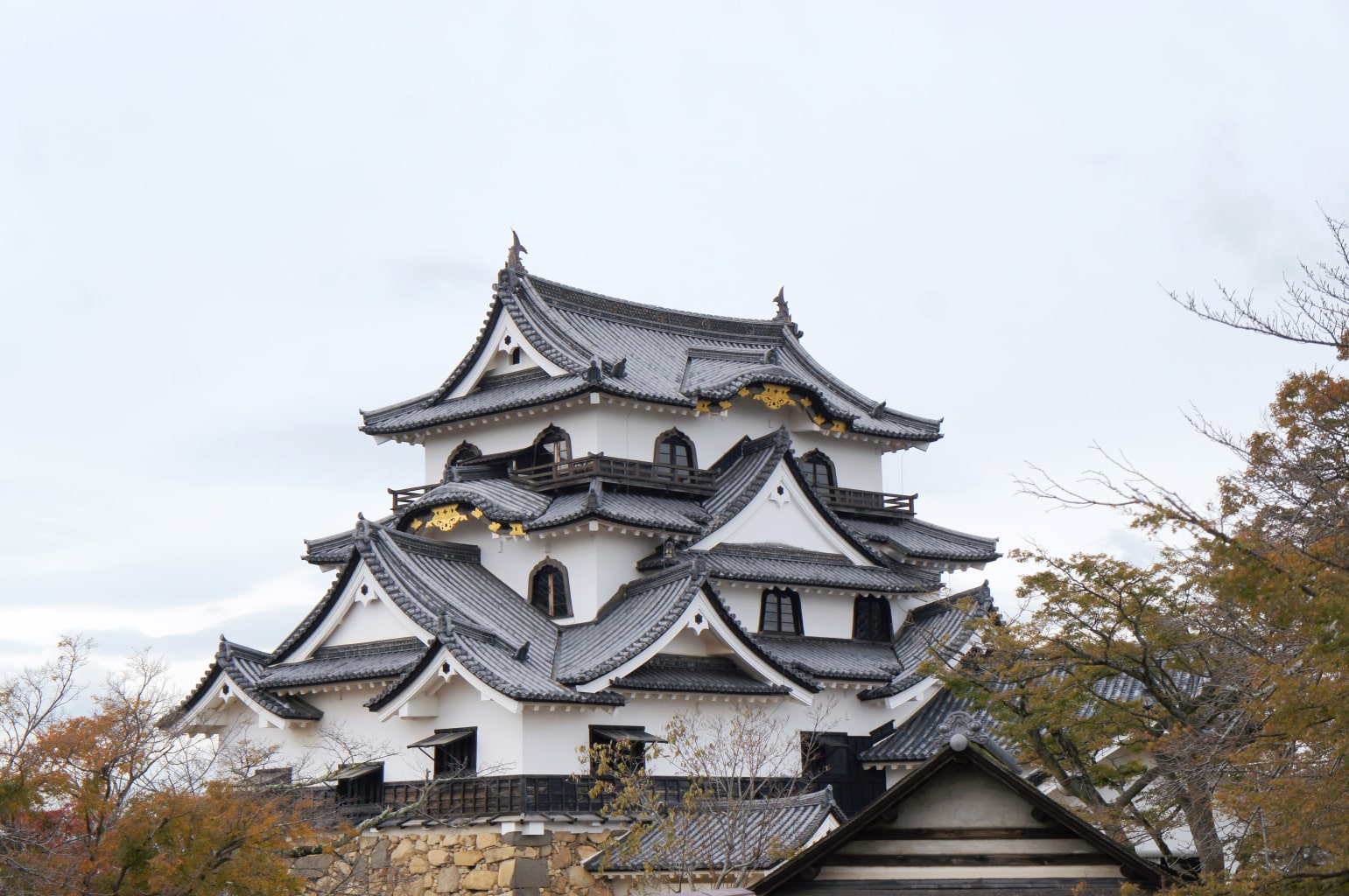Hikone City is located in Shiga Prefecture, on the eastern shore of Japan’s largest lake, Biwa-ko. Only 45 minutes by train from Kyoto, on the Tokaido Road, it is home to one of the most beautiful castles in Japan and one of the few ones to be classified as a National Treasure. Hikone Castle is a rare and precious vestige of the feudal era in Japan.
Hikone Castle: A National Treasure
It takes only 10 minutes to walk from Hikone Station to Hikone Castle. A wonderful, surprise awaits me at the counter: “English or French?” the staff asked me, a first for me in Japan. The small castle offers indeed French documentation, which is rare enough to be worth mentioning!
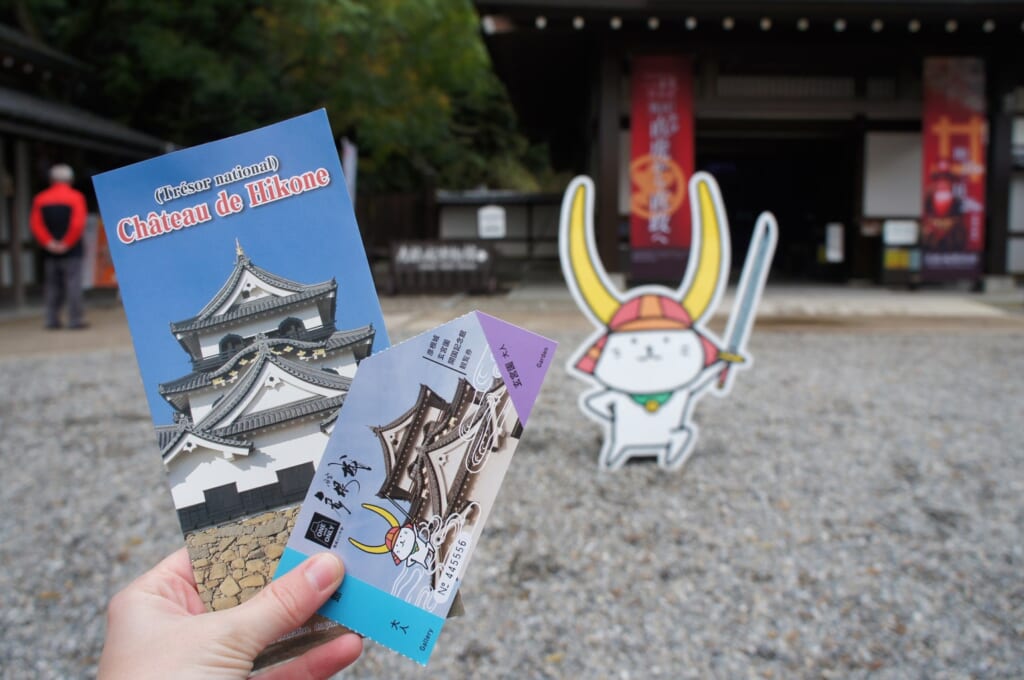
Hikonyan is also here to welcome you, proudly showing off his katana. According to the tourist information, some souvenir shops remain in their traditional setting along with the castle. This samurai-nyan cat is the Japanese equivalent of English “meow” – wearing the helmet of Naokatsu Ii, the Lord who built the Hikone Castle and is one of Japan’s most popular mascots, and an excellent ambassador for this city.
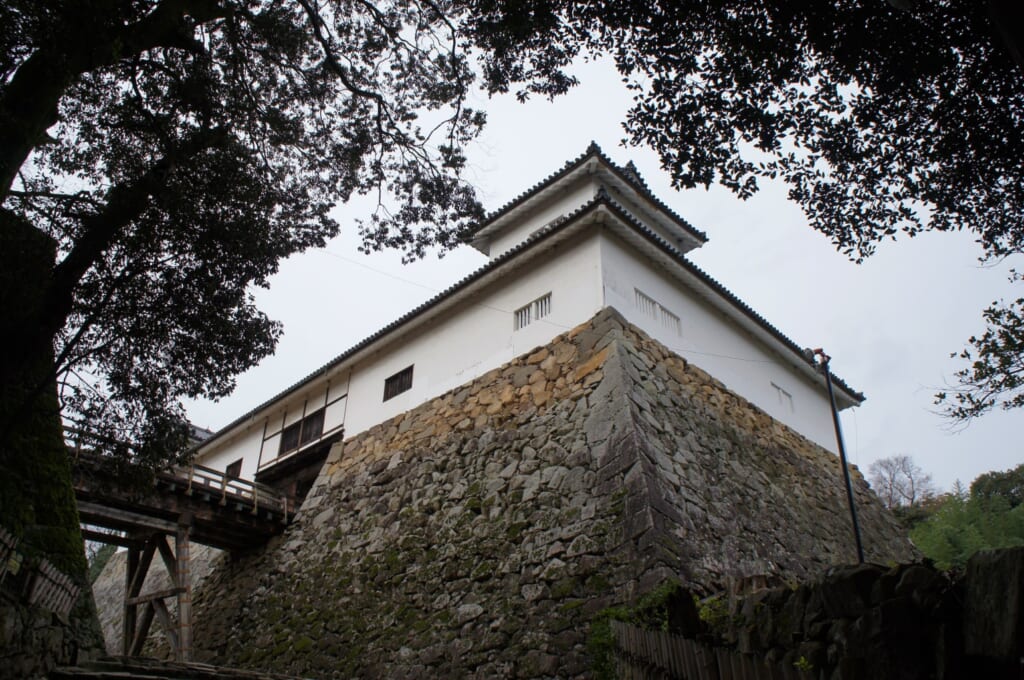
After passing the double moat belt and the Tenbin-Yagura (scale-shaped) tower, you will arrive at the foot of the donjon, on a vast esplanade planted with maples and cherry trees. I arrived a little late for the autumn foliage momiji, but that did not detract from the elegance of the building. The many gables spread out in a beautiful balance between the white walls and the dark gray roofs enhanced with gold. The reputation that ranks Hikone Castle as the most beautiful castle in Japan is clearly well deserved.
An Authentic Building of Feudal Japan
It is not always clear in the guides, but most of the castles that we can see today are modern reconstructions in concrete, or sometimes wood, of the original buildings. Only 12 castles have been preserved in the archipelago, five of which are designated as National Treasures: Hikone, Himeji, Matsue, Matsumoto, and Inuyama.
Built from 1602 to 1607 under the orders of the Daimyo (a rank of lords of feudal Japan – Naokatsu Ii) Hikone Castle by Lake Biwa celebrated its 410th anniversary in 2017.
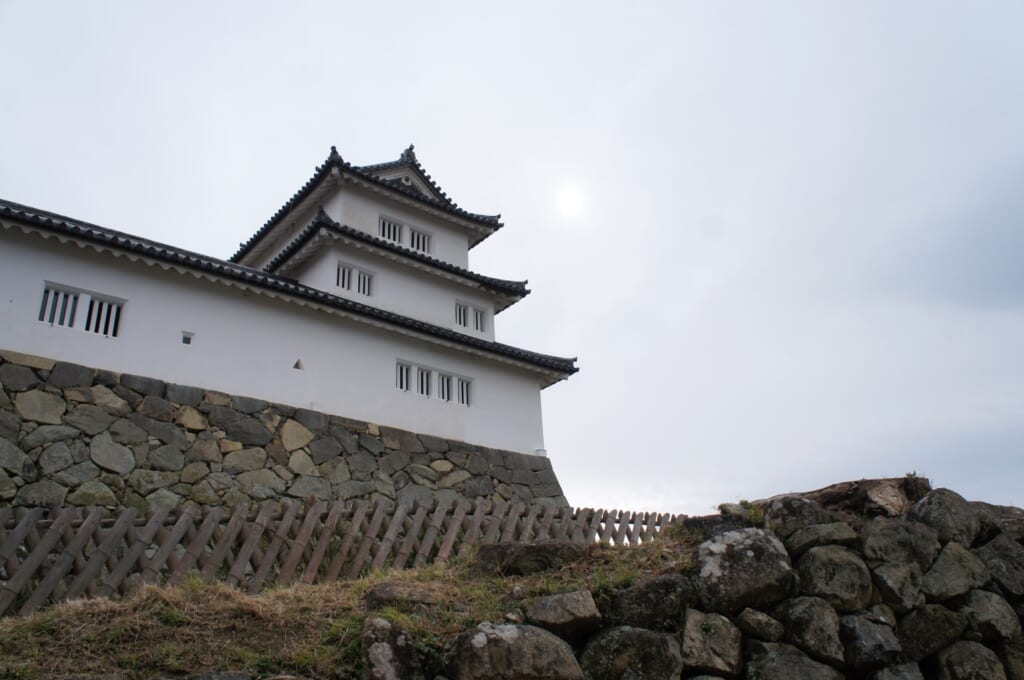
This castle should have been shot down like many others at the beginning of the Meiji Period (1868-1912), to mark the end of the feudal shogun regime. But a visit from the emperor saved the building; seduced by the beauty of the architecture, he decided to save it.
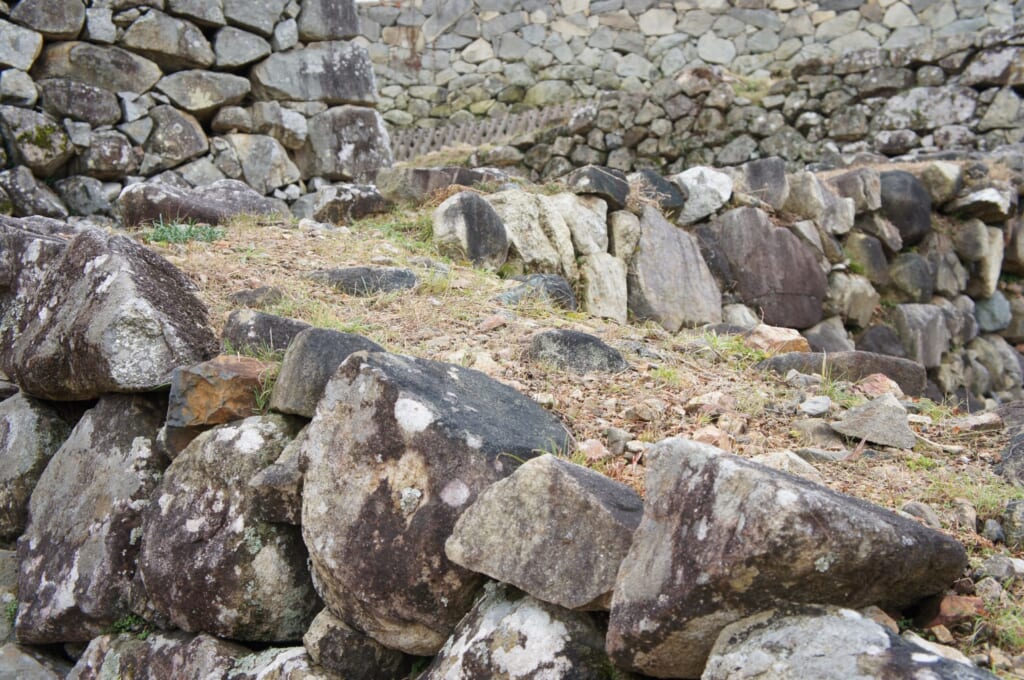
The foundations of the castle are built according to the dry stone masonry method called gobozumi. The large, uncut stones are skillfully stacked without mortar.
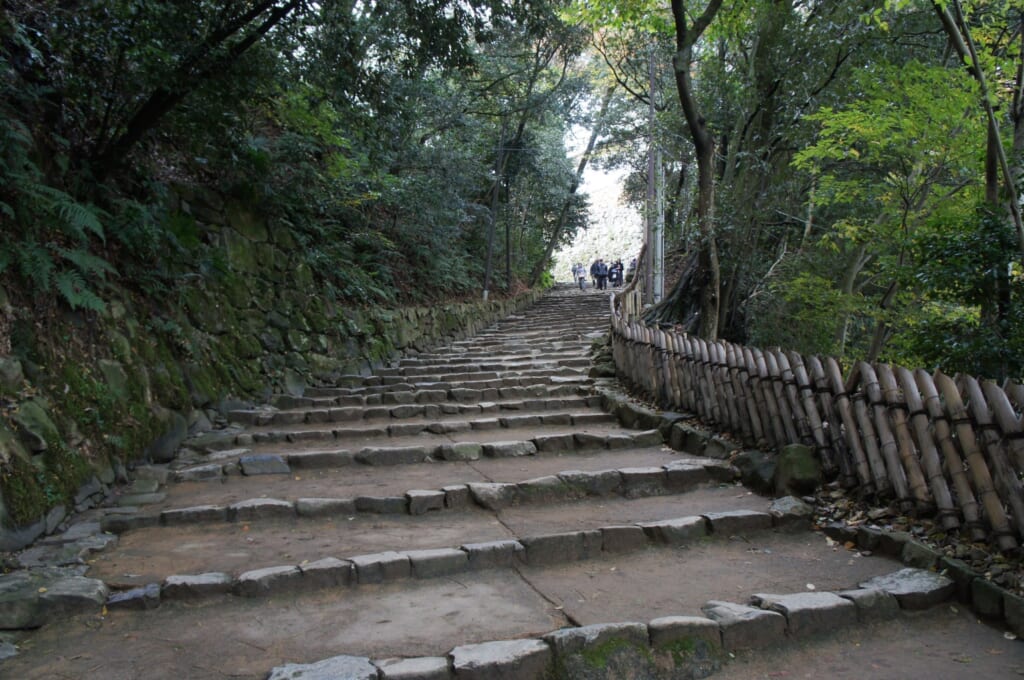
If you are interested in feudal Japan and traditional arts and crafts, the Hikone Castle Museum exhibits a beautiful collection. You can admire the armor of samurai Hikone, their weapons, masks and Noh theater costumes, ceramics, or painted screens and calligraphy.
Around Hikone Castle
As you can see on the map, the visit is not limited to the castle itself. Many towers and other buildings are still standing, many of which are considered Important Cultural Properties of Japan. Green spaces and a beautiful Japanese garden invite visitors to take a stroll.
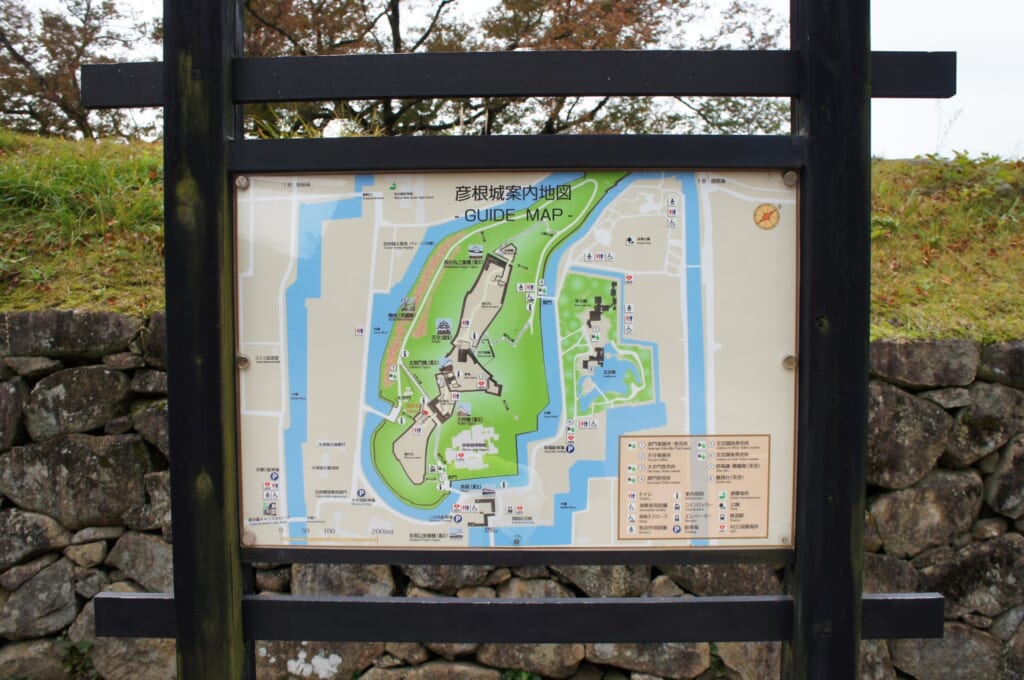
The strategic military position of Hikone Castle – perched on Konkiyama Hill (for “Golden Turtle Mountain”), overlooking Lake Biwa and the Tokaido Road (which linked Tokyo to Kyoto) makes it the perfect tourist site to discover the story of the region.
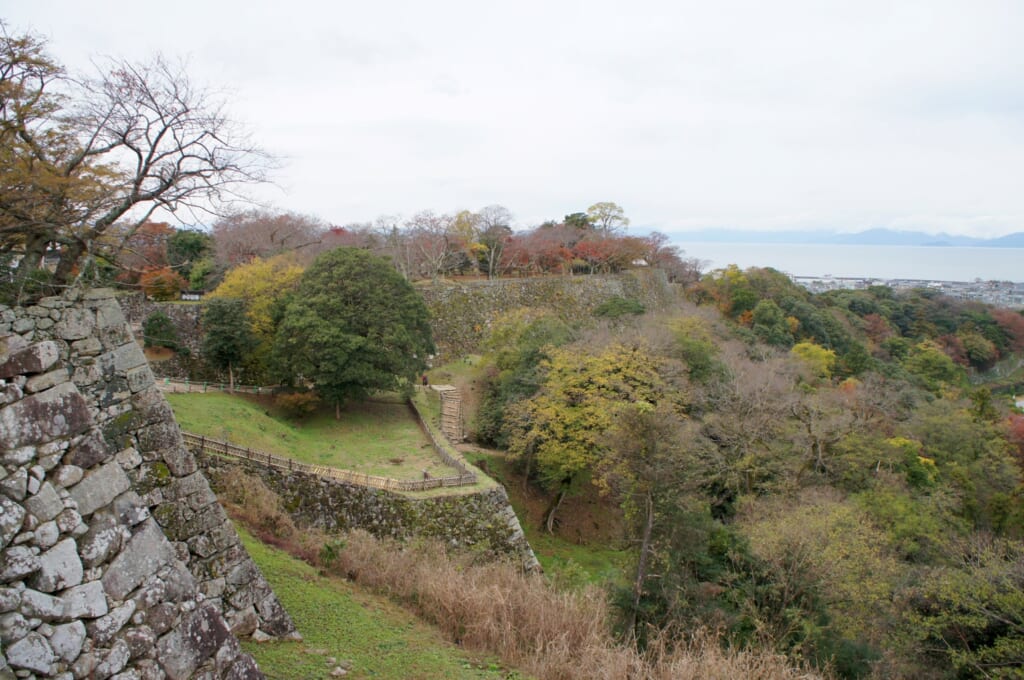
From the ramparts, the view of Lake Biwa is beautiful, and it is very pleasant to walk along the hillside, admiring the landscape and the treetops whose colors vary with the seasons.
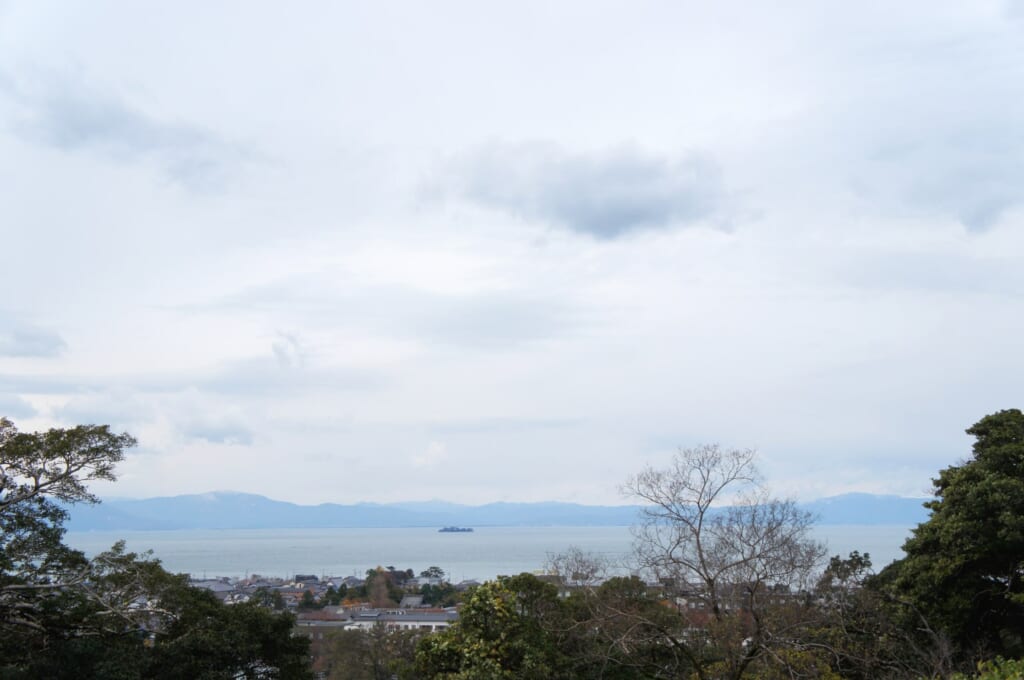
The moats also offer a beautiful promenade, it is also possible to rent small boats and experience the view from the water.
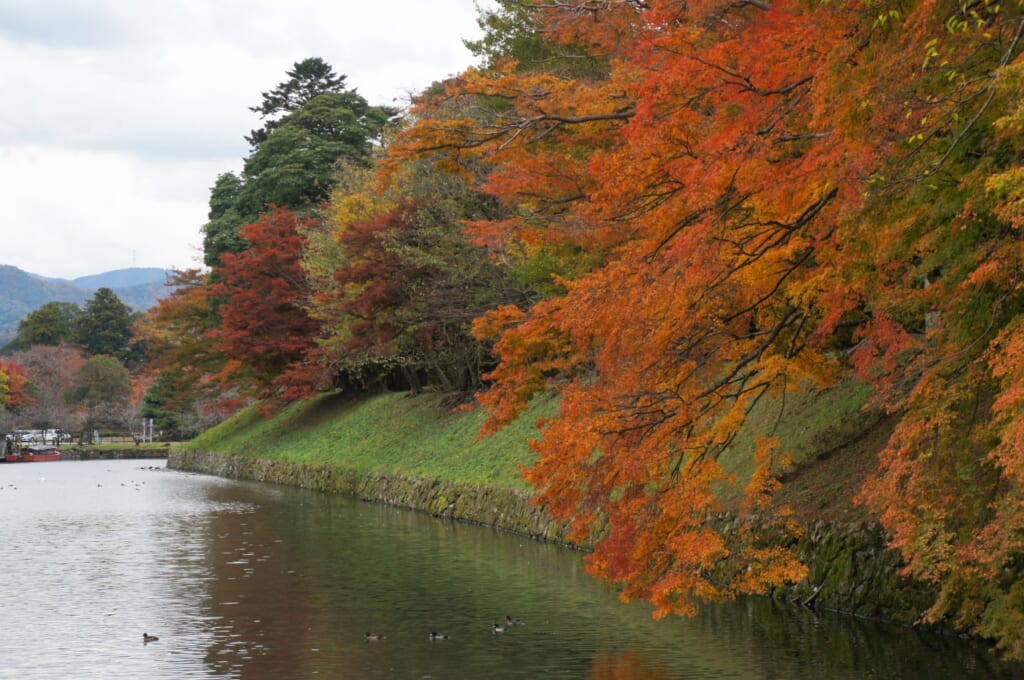
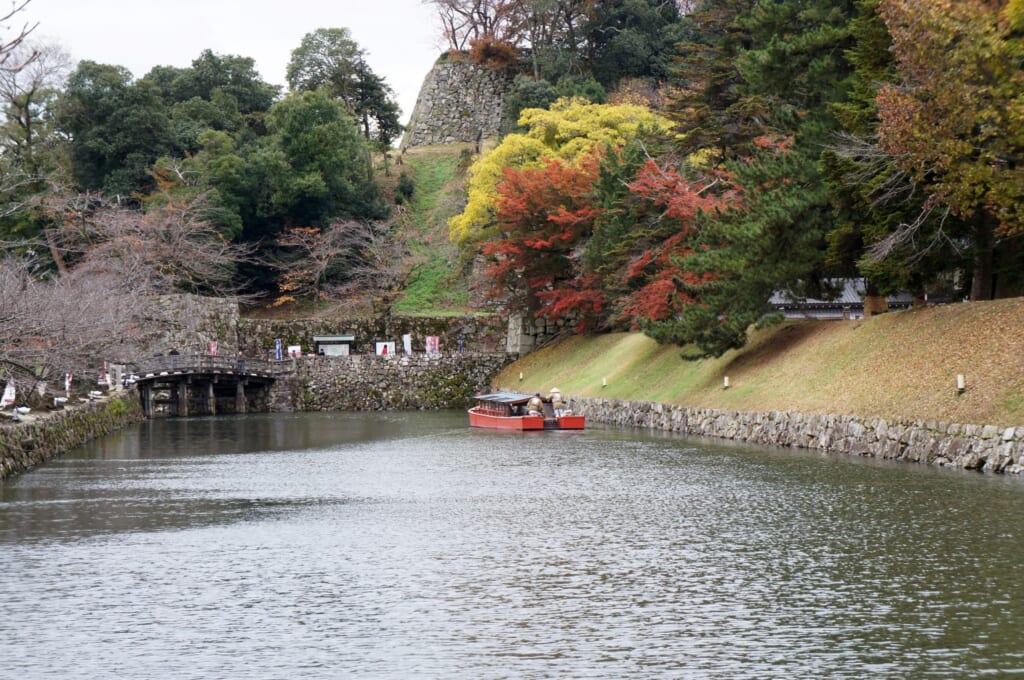
Genkyu-en, An Important Garden of Lords during the Edo Period
Below the castle, do not miss the Genkyu-en garden. Built between 1677 and 1684, it shows a typical garden from the beginning of the Edo era (1603-1868). The subtle view of the castle is very picturesque.
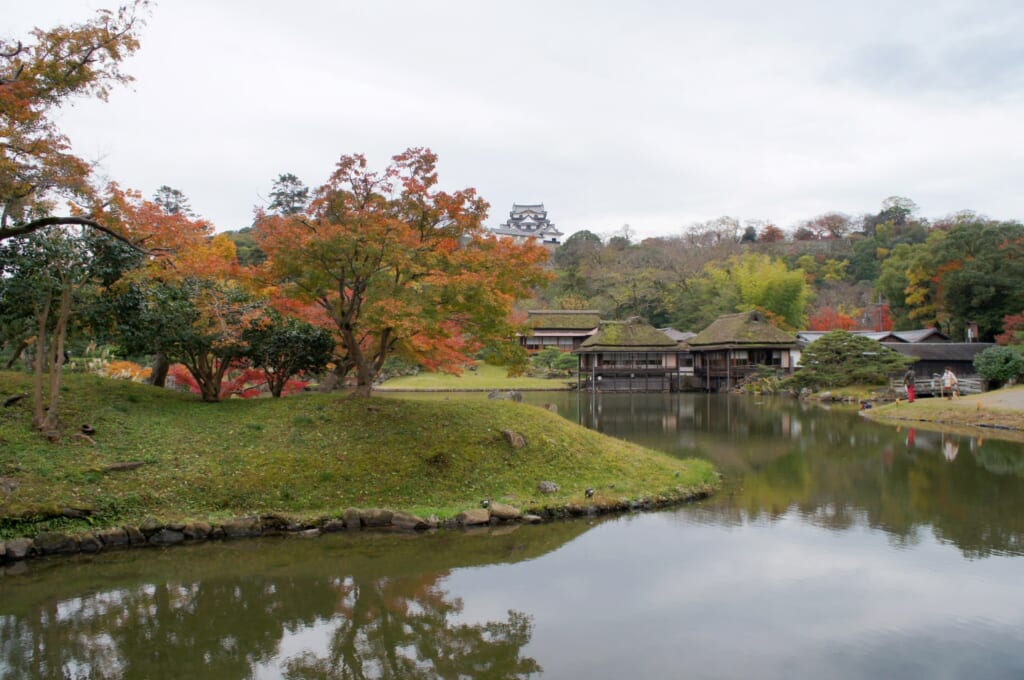
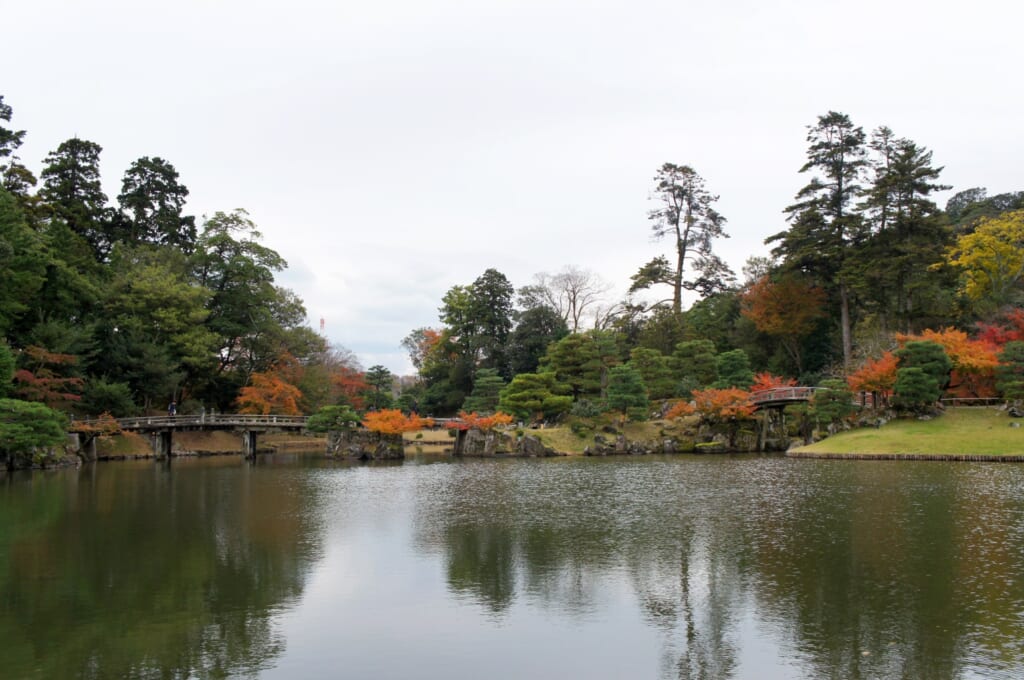
Designed around a pond – in the Chisen-kaiyu style – crossed by many bridges, the Genkyu-en garden invites many visitors to relax and daydream. Here, nothing seems to have changed in 340 years!
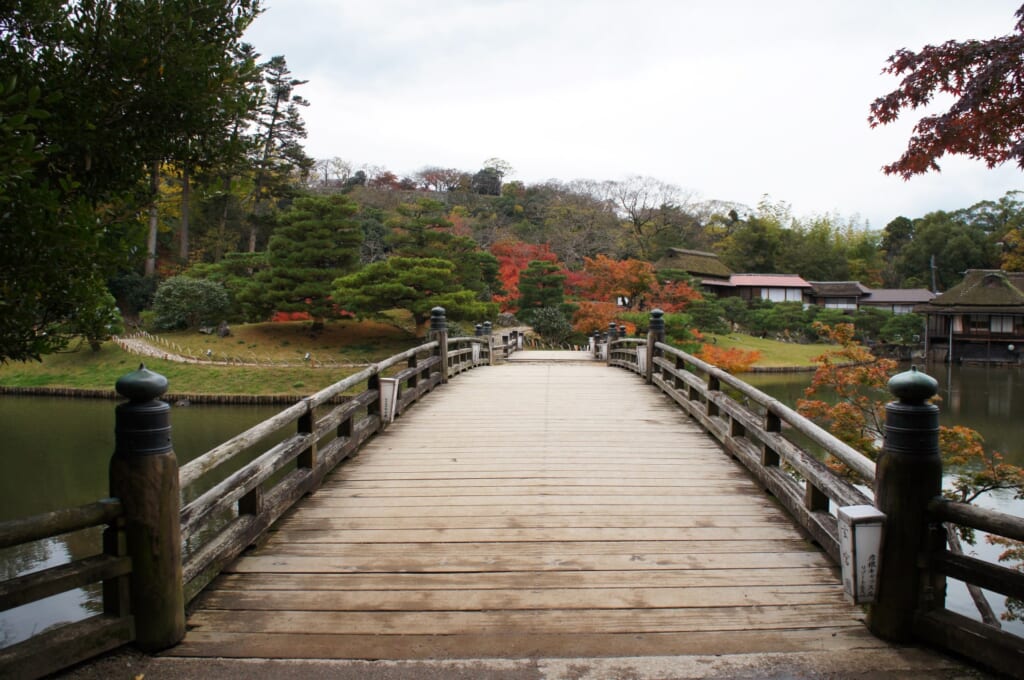
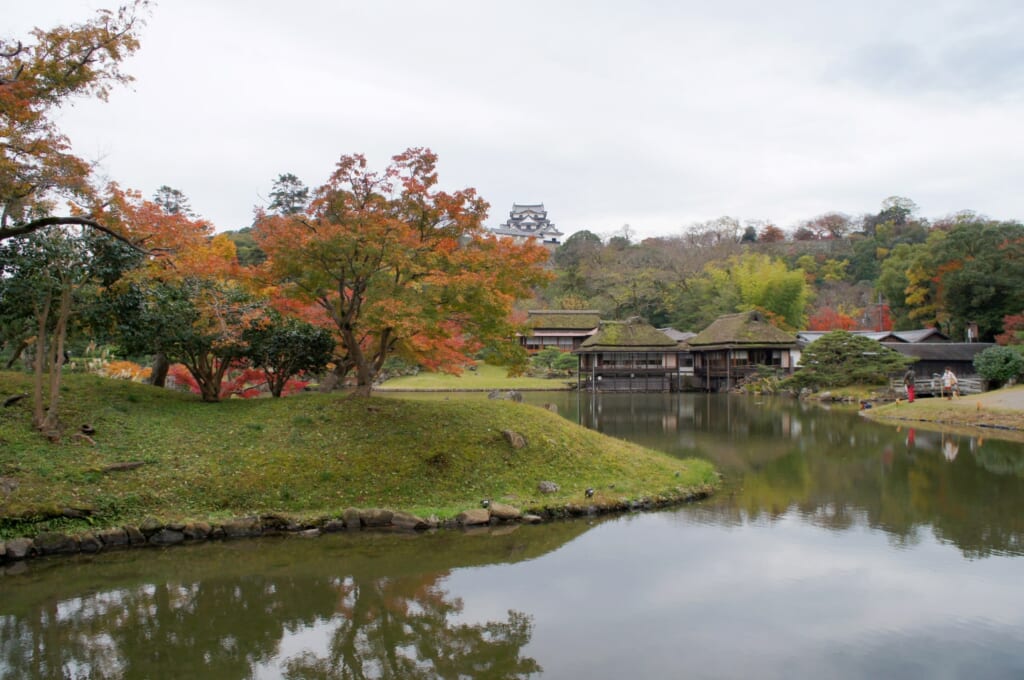
General Information
Check out the Hikone Travel Guide for planning a visit or a stay in Hikone. You will find practical information (access, rates, accommodation, events, and sightseeing ideas around), and very comprehensive information on the history and culture of Hikone. For more tourist information to prepare for a trip to Lake Biwa, visit the Shiga Tourism website.
How to Get There?
The castle is located a 10-minute walk from Hikone Station, about 45 minutes from Kyoto, and 1 hour 15 minutes from Osaka by JR lines.
Hikone is also served by the lines of the company Ohmi Railway. The company’s 2-day Pass gives you access to the “Hikone Castle Town Circuit” bus, which goes through all the tourist points of the city.
Sponsored by Seibu Holdings Inc.
Translated by Aika Ikeda


